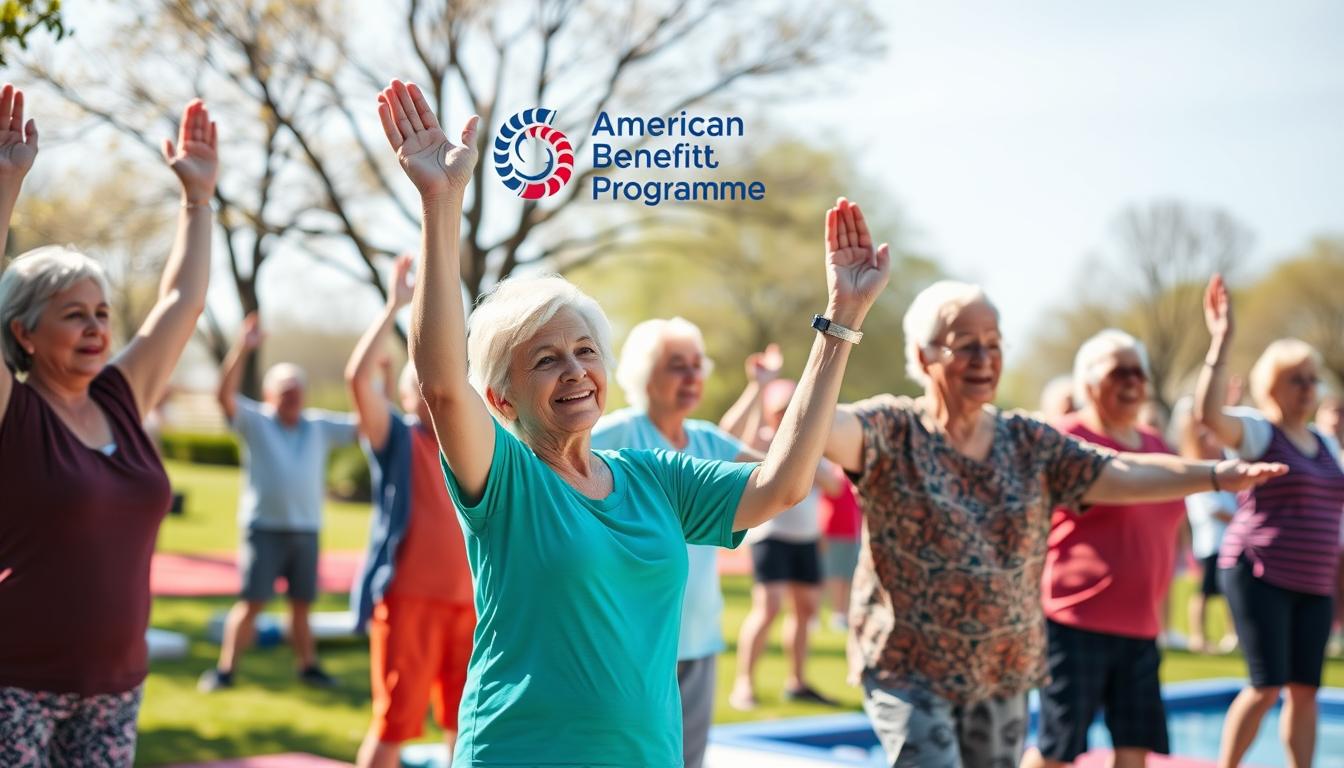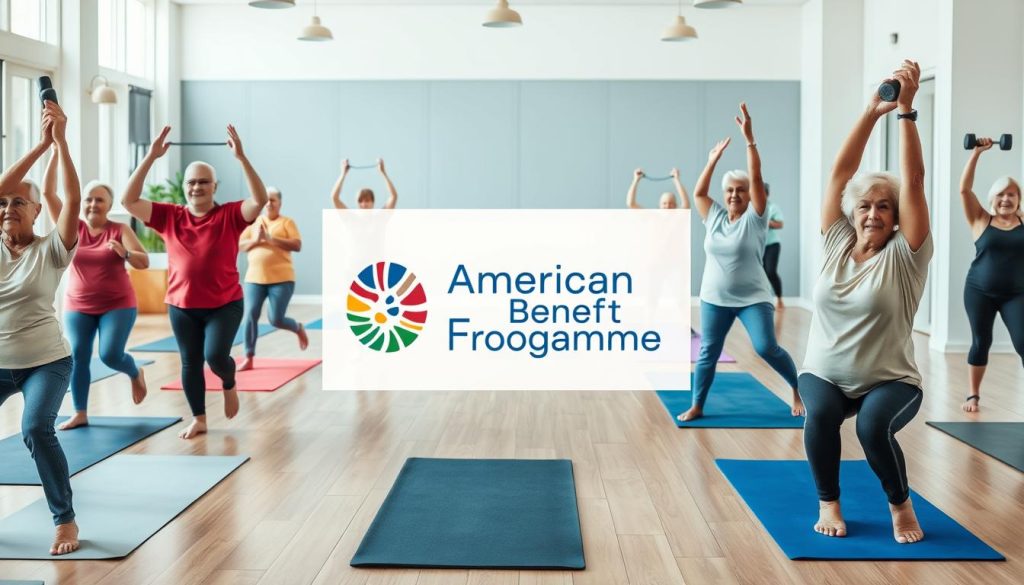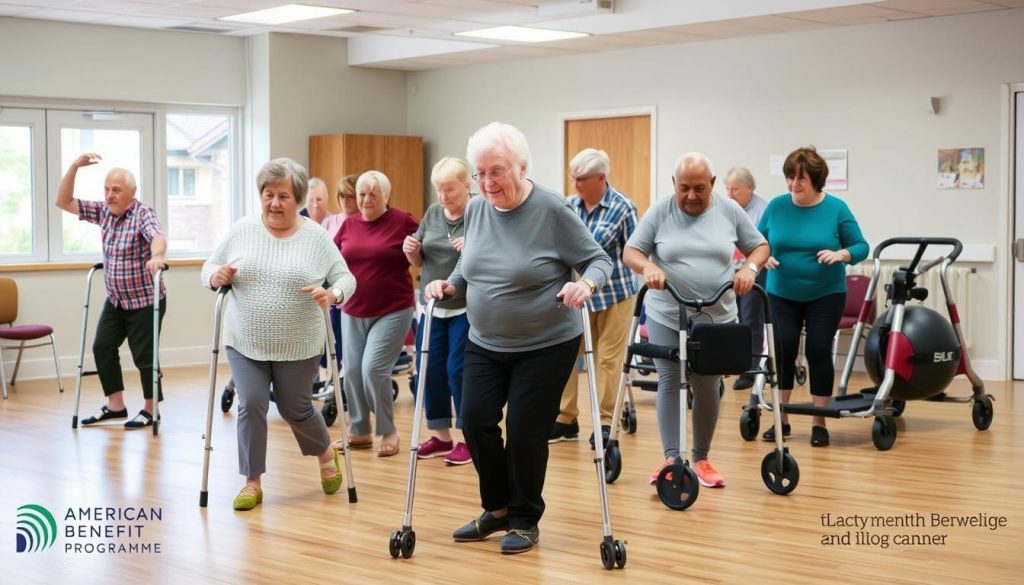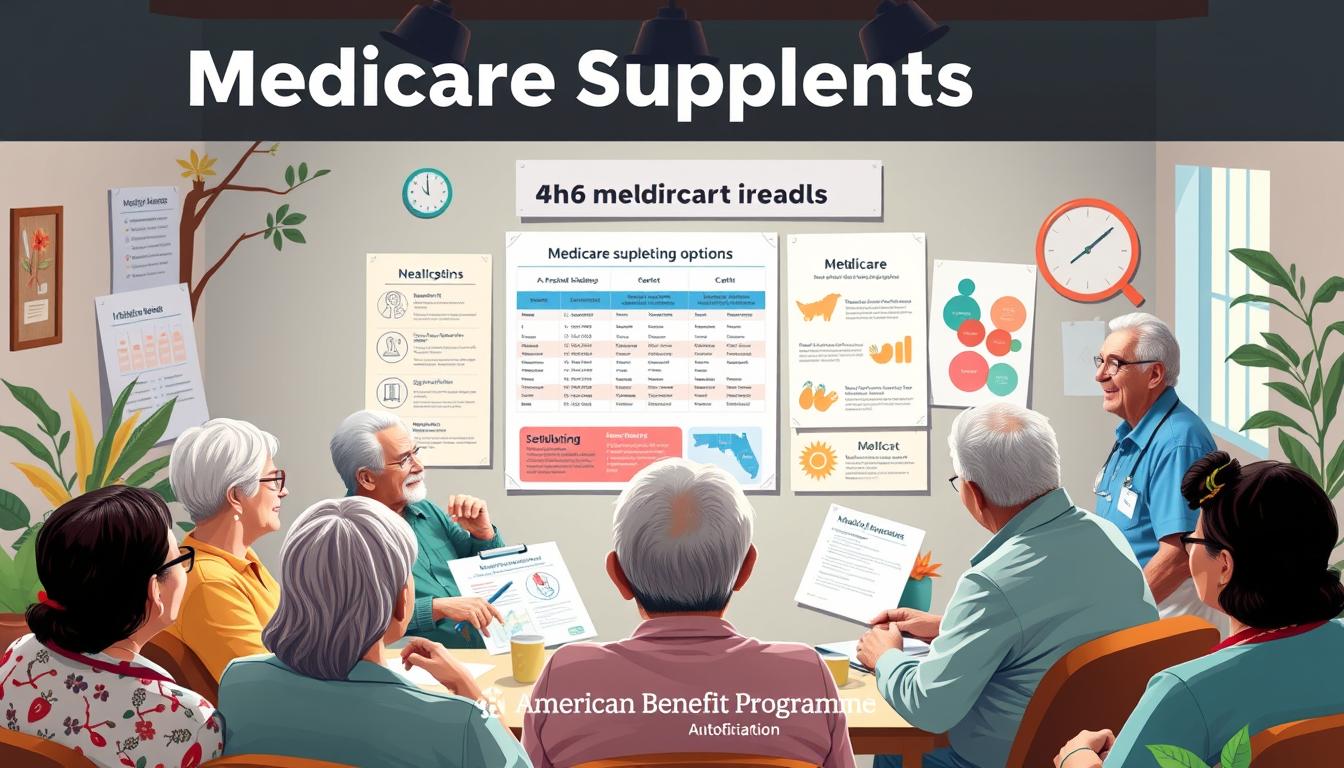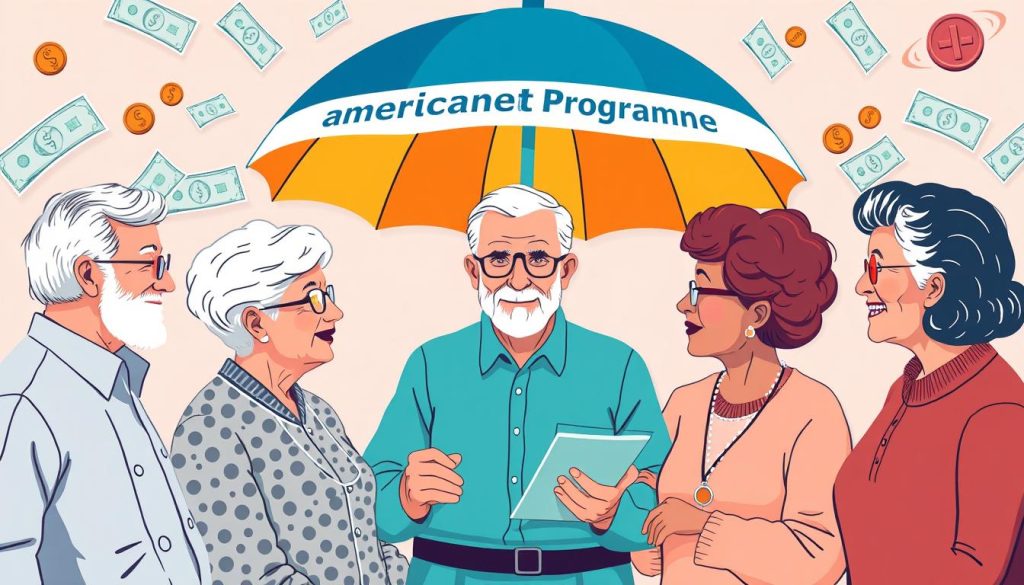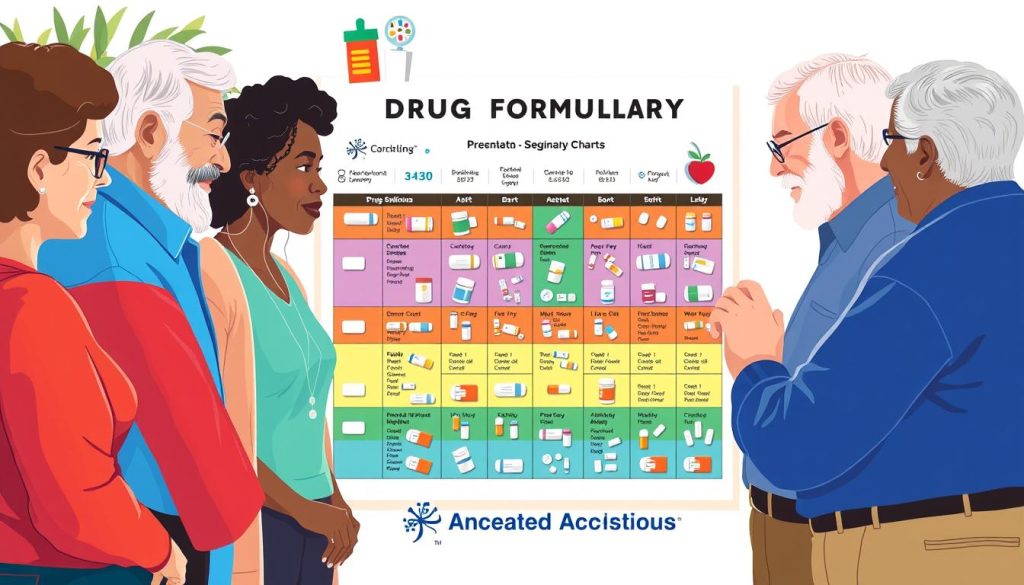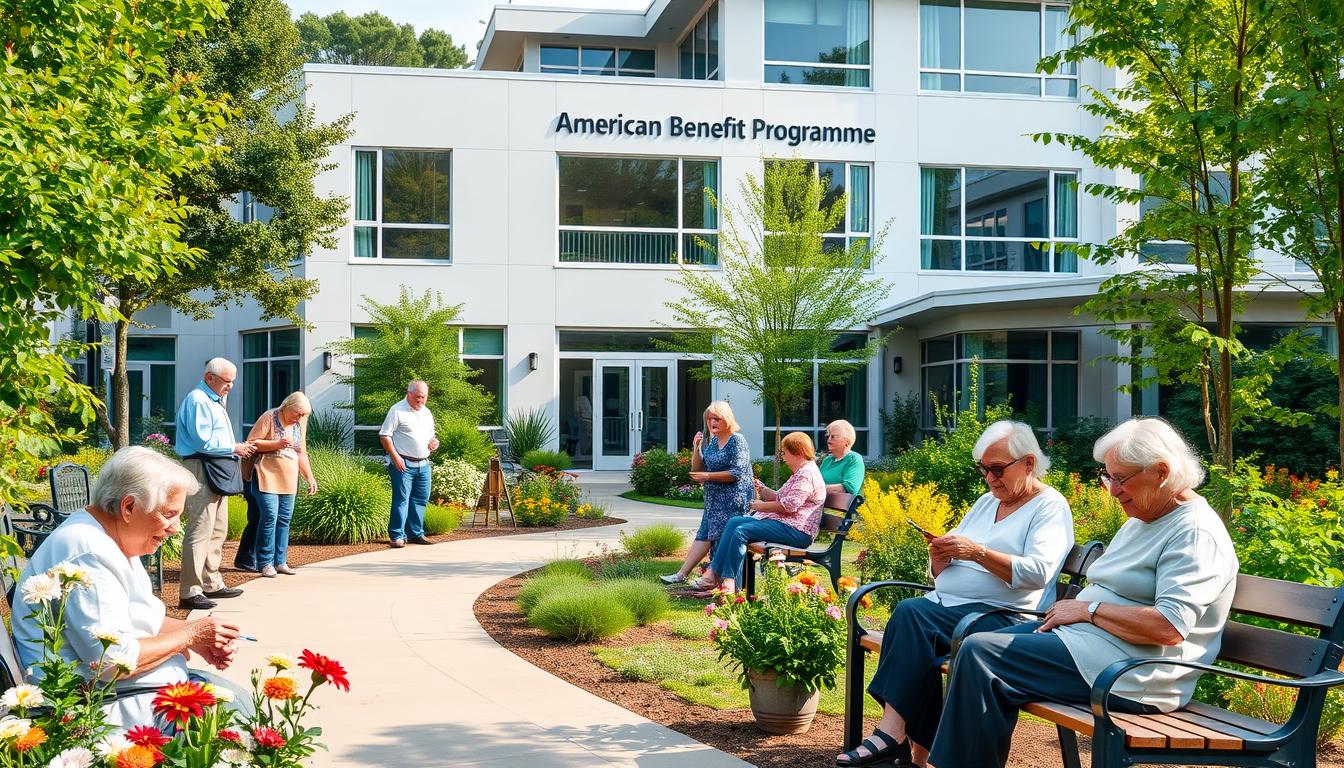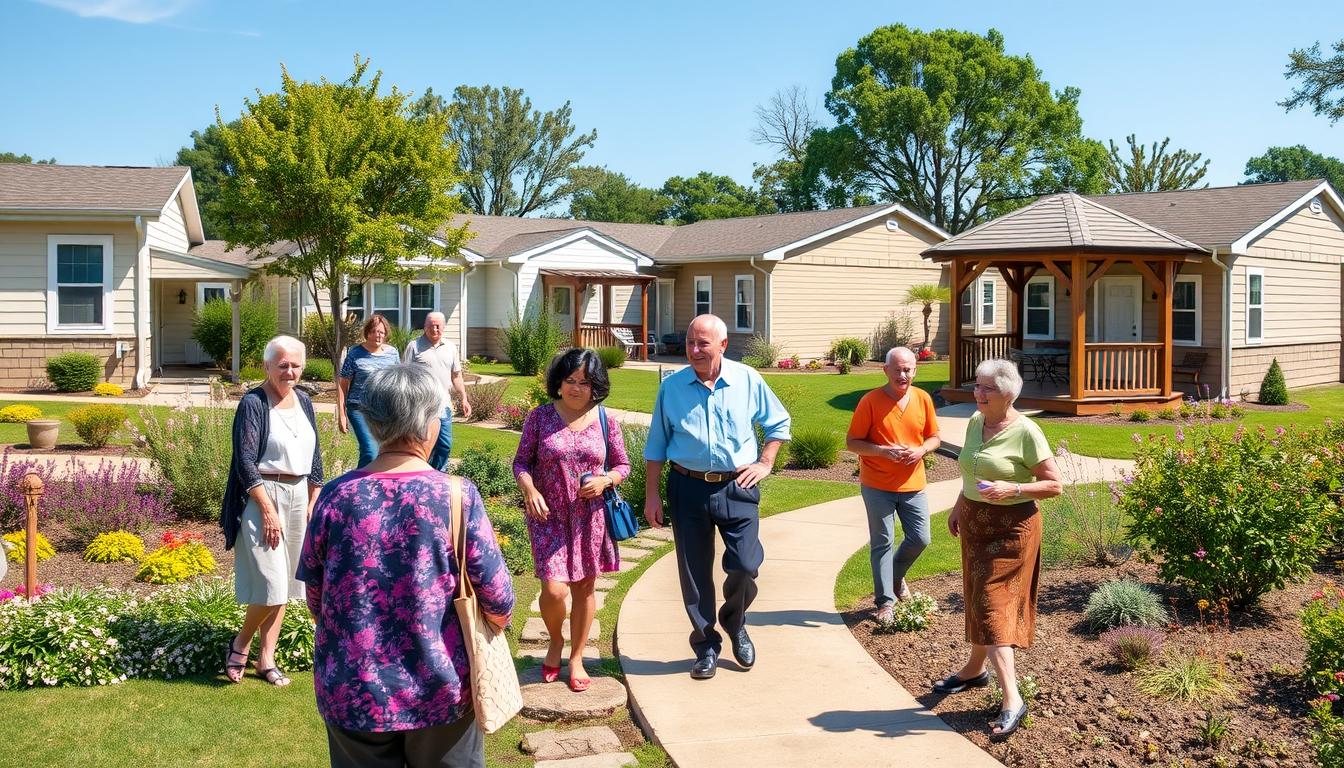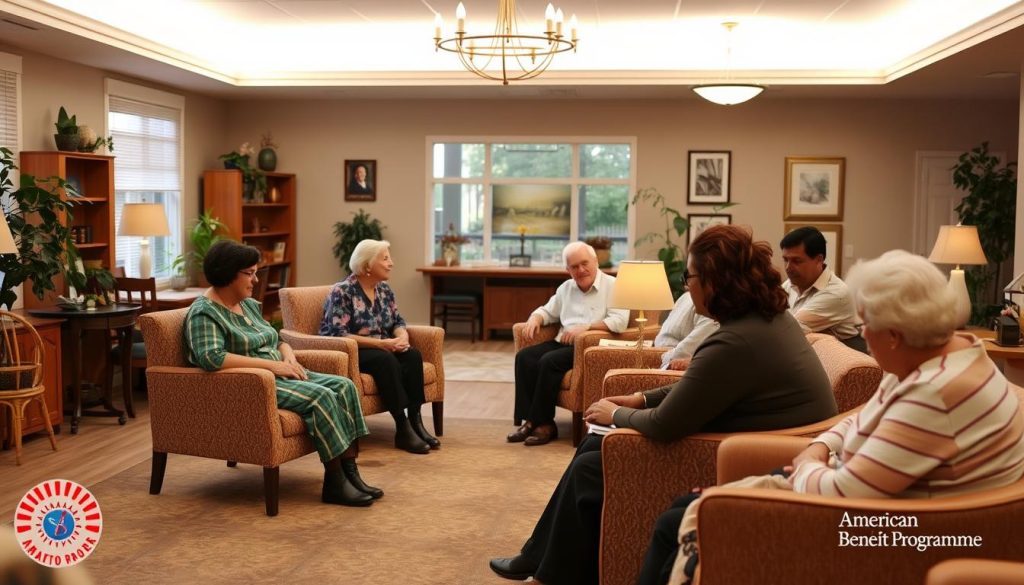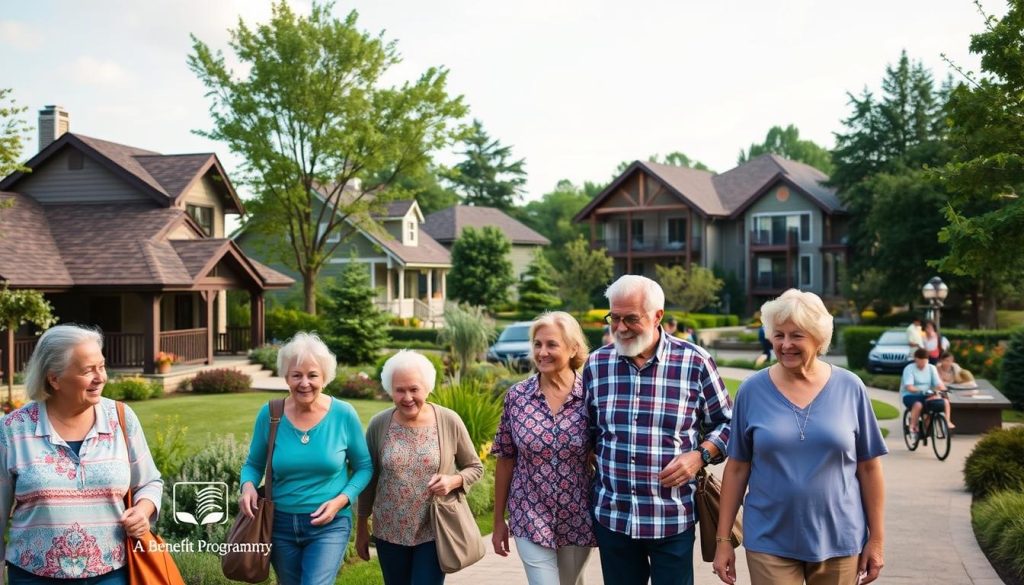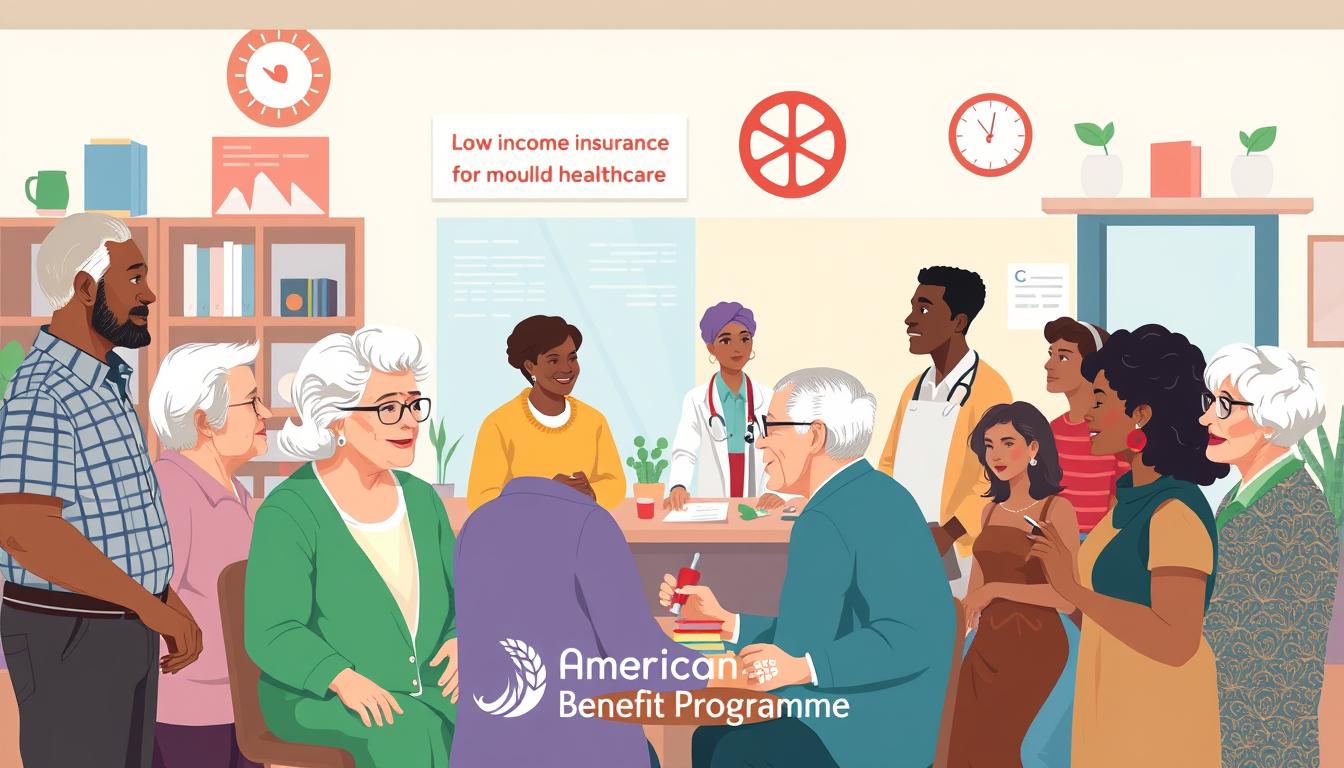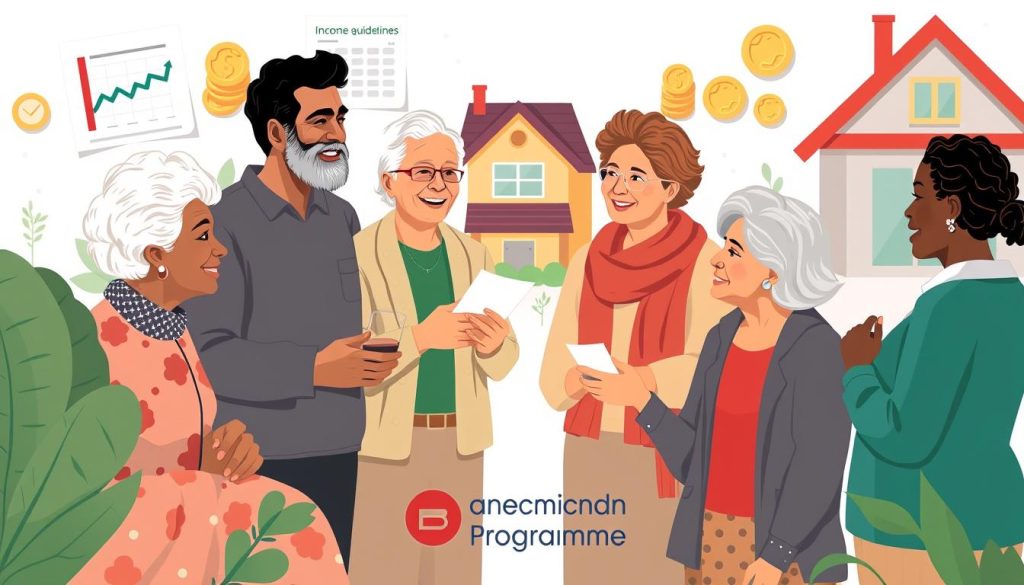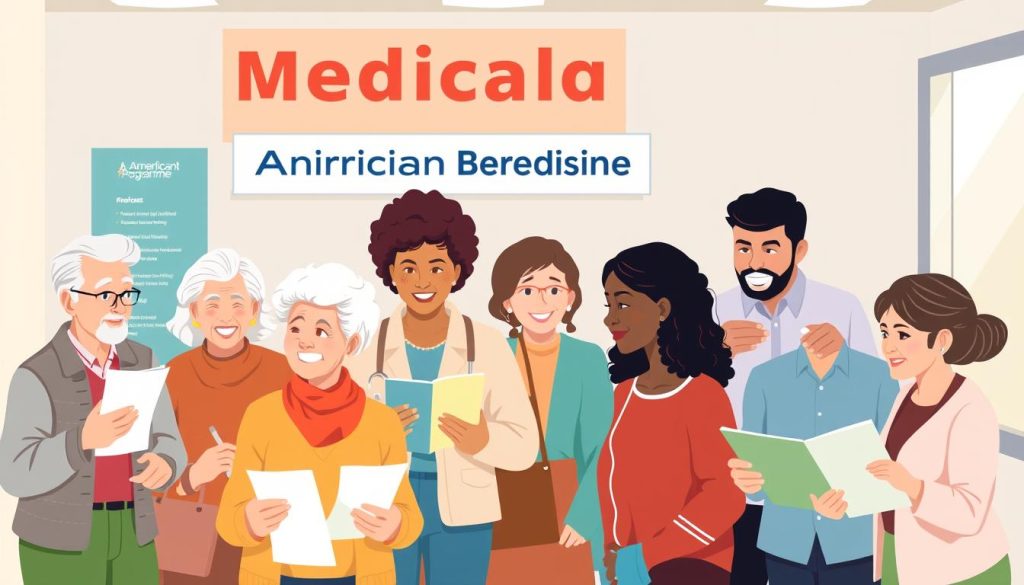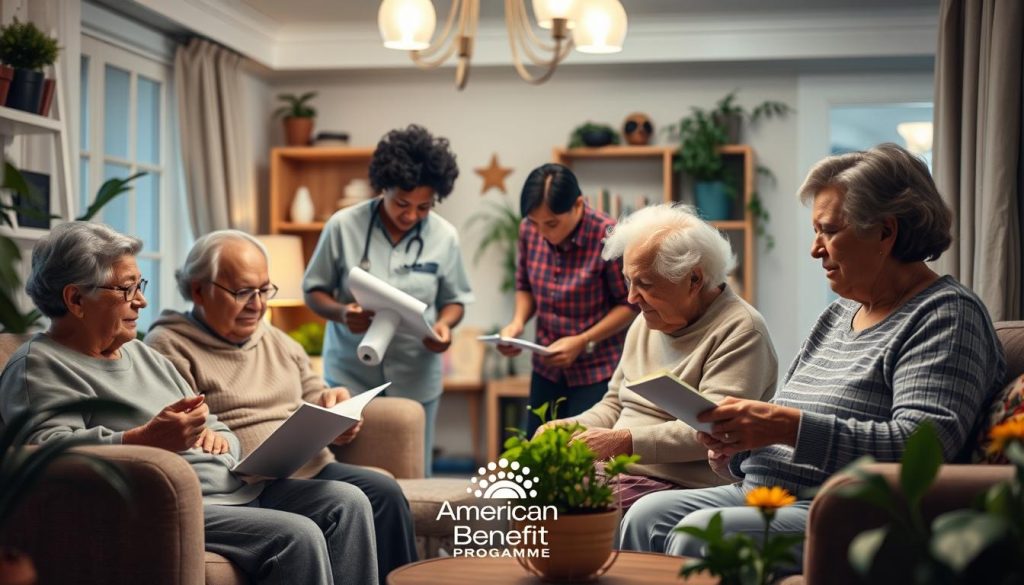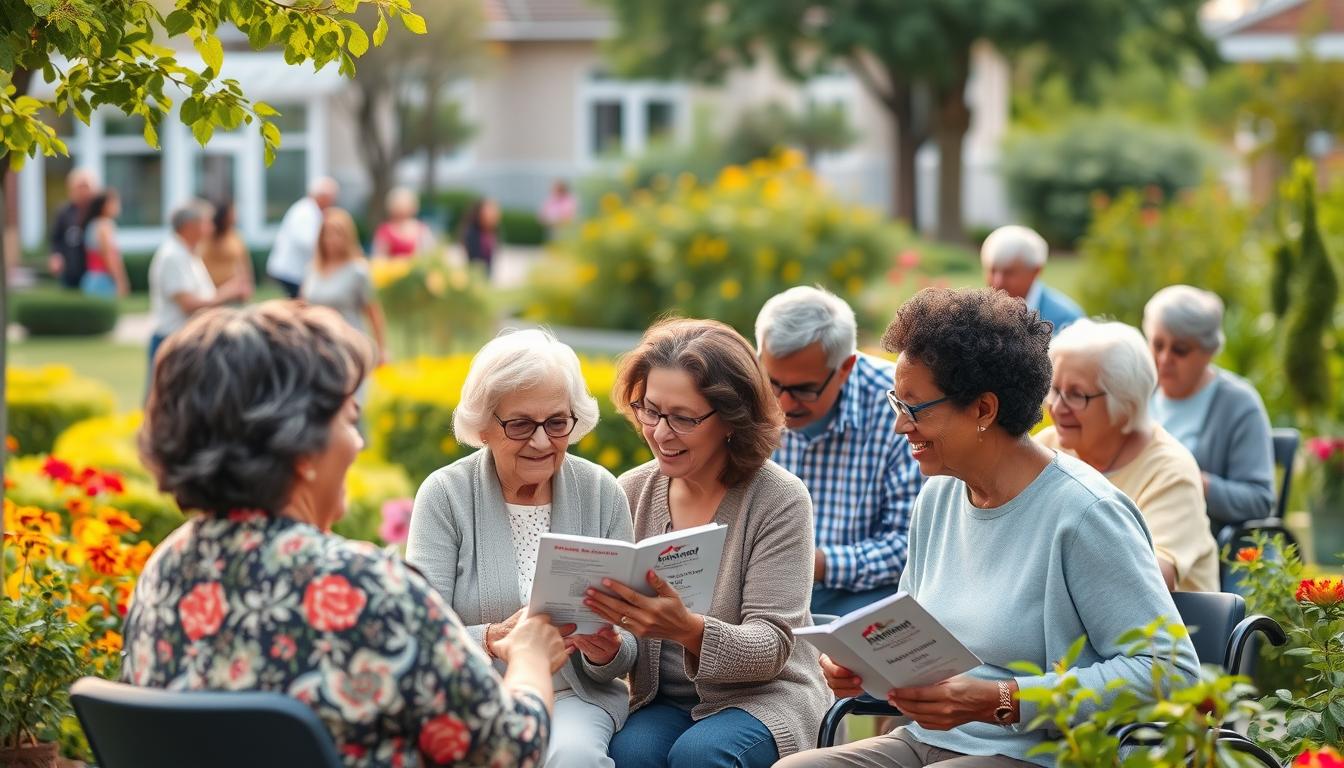Are you seeking a better, healthier life as you age? More seniors today want to know how to age well. Last year, the National Council on Aging (NCOA) helped improve 2.9 million seniors’ lives. They showed how special programs can make a big difference1. This article will look at various resources for seniors’ well-being, helping you find your way with confidence.
Key Takeaways
- Understanding available health and wellness resources is essential for aging well.
- Donation-driven programs significantly improve seniors’ health and financial security.
- Local and national resources are vital for providing adequate care.
- Physical activity and nutrition are critical components of senior wellness.
- Community support enhances the aging experience for older adults.
Understanding the Importance of Health and Wellness for Seniors
Health and wellness matter a lot for seniors during aging. Keeping a balanced life helps older adults stay physically fit and mentally alert. It also helps them make friends2. About 11% of seniors over 65 develop Alzheimer’s dementia. This shows why we must care about their mental health2. The CDC says seniors should exercise for 150 minutes each week to stay healthy as they age2.
Having friends is key to feeling good. Studies say 34% of seniors feel alone and miss having pals2. Regular hangouts can cheer them up. Sadly, 33% of older folks don’t see friends outside their home weekly. We need to help them connect more2.
Resources on aging well focus on staying fit and thinking sharp. One study found that adults over 40 walking 8,000 steps a day were 51% less likely to die early than those walking only 4,000 steps3. Being active is vital for seniors to keep in good shape. Foods like those in the Mediterranean diet can also protect their hearts3.
Good health and wellness guides can lift seniors’ lives. They should exercise, eat right, and keep up with friends. This way, they can enjoy their later years with the best advice for older folks.
Holistic Approach to Geriatric Health
It’s vital to look at senior health in a complete way. This means linking body, mind, and feelings. By doing this, older people can enjoy life more fully.
Physical Well-Being
Being physically healthy is key for seniors. Doing regular exercise helps with flexibility and staying strong4. Yoga and Tai Chi are great for moving better and feeling less stressed4.
Home health care helps seniors stay well where they live. Having personalized care plans leads to better health5. Eating lots of fruits, veggies, grains, and lean meats keeps energy up and helps fight off sickness4.
Mental and Emotional Health
Mental and emotional wellness are just as crucial5. Living at home makes seniors happier, given the comfort it brings. Doing art boosts confidence and mood. Volunteering builds connections and offers a sense of purpose, cutting down on stress4.
Meditation helps with stress and sleeping better4. Being part of a community fights loneliness and feeling left out, which many seniors face5.
Health and Wellness Resources for Seniors
Seniors need to get to health and wellness resources to keep their life quality high. Programs across the country help older adults with their specific needs. They offer key services that help seniors stay well.
Local and National Programs
Local efforts tackle problems unique to each community. Some programs offer fitness classes for seniors. These help with moving around better and preventing falls. Volunteering also helps seniors feel less alone by giving them a chance to meet others. At the national level, groups like the Administration for Community Living give out new health info for seniors6. They share news on help with costs for things like medicine and homes. This lets older folks get the important services they need7.
Community Support Services
Community services help seniors make friends and feel happier. They include help with getting around, which lets seniors stay free and active. There are also lots of supports for health management. These include help with money management and making health decisions when things get tough. Getting help with Medicare and learning how to manage money offers big helps to seniors handling their health care6. Being socially active, taking care of oneself, and joining in community stuff greatly boost seniors’ health and happiness7.
Senior Nutrition Guides
Nutrition is key for seniors to keep up their energy and health. It helps older adults choose what to eat wisely. They need protein, fiber, vitamins, and minerals to stay well. The USDA’s MyPlate is made for them to meet their special food needs8. The Academy of Nutrition and Dietetics also has great articles for senior nutrition8.
Understanding Nutritional Needs
As people get older, their body changes and so do their nutritional needs. The Food and Nutrition Service (FNS) helps those 60 and older get the right nutrition9. The Commodity Supplemental Food Program (CSFP) improves health for low-income seniors9. Eating different nutrients helps fight health issues and keeps seniors healthy. It’s key to spot nutritional risks early, and tools like the Enhanced DETERMINE Checklist are helpful8.
Meal Planning Tips for Seniors
Smart meal planning mixes nutrition with personal tastes and health needs. SNAP-Ed has resources to help seniors eat well, stay safe with food, and manage their budget8. Some good meal planning tips are:
- Incorporate whole foods: Choose whole grains, lean proteins, fruits, and veggies for good health.
- Batch cooking: Make meals ahead to save time and always have healthy options ready.
- Modify recipes: Change recipes to be richer in nutrients or fit special diets.
- Stay hydrated: Drinking enough water and fluids is vital for staying healthy.
Using local programs like the Senior Farmers’ Market Nutrition Program (SFMNP) helps low-income seniors get fresh produce9. The Older Americans Act (OAA) Nutrition Programs let states boost nutrition services for seniors. This ensures they get the nutrition they need9.
Senior Fitness Programs
It’s very important for seniors to stay moving. If they keep active, seniors will be stronger and more flexible. Only a few seniors do the exercises the CDC recommends. They should do 30 minutes of moderate exercise most days and work all major muscles at least two times a week10. Health and wellness resources for seniors are key to help them do this.
Importance of Physical Activity
Being active lowers the risk of many chronic diseases for seniors. Community programs offer activities made just for them. Activities like Resistance Training and Tai Chi make muscles stronger and help with balance11. These activities are good for the mind, feelings, and body health.
Types of Senior Fitness Programs Available
There are many types of programs for seniors to choose from. They can pick what they like best.
- Low-impact aerobics are good for the heart but easy on the joints.
- Geri-Fit has strength training twice a week for 45 minutes10.
- Yoga and Pilates improve balance and flexibility for better stability11.
- Water aerobics are soft on the joints but great for fitness.
- There are fun brain games and activities to keep the mind sharp.
- Mindfulness and meditation classes help lower stress and make you feel better11.
Active Choices and Fit and Strong! mix different exercises for seniors. These help them exercise safely and get the benefits of staying active1012. Using these health and wellness resources for seniors helps them live independently and have a better life.
Elder Wellness Resources
It’s very important for seniors to have easy access to good healthcare. There are many resources to help with this. They offer preventive care and health screenings. One can call the Eldercare Locator at 800-677-111613 for help. This includes finding in-home support and ways to get around.
Many seniors might need home health care. This can include nursing care at home after a hospital stay or for a long illness. Be aware, these services cost money for each hour13. Also, Medicare might only cover some of these services13.
Accessing Healthcare Services
In places like Marjorie P. Lee, they use a method called person-centered care. It lets residents choose how they get healthcare. This makes a strong bond between staff and seniors14. They get to decide their daily schedule. This keeps them independent and makes their lives better14.
This thoughtful approach often results in happy seniors and families14.
Wellness Workshops and Classes
Workshops and classes on wellness help seniors keep learning. They cover managing stress, cooking healthy, and tai chi. These programs teach important life skills for a better life. By joining, seniors build their independence and make smarter health choices14.
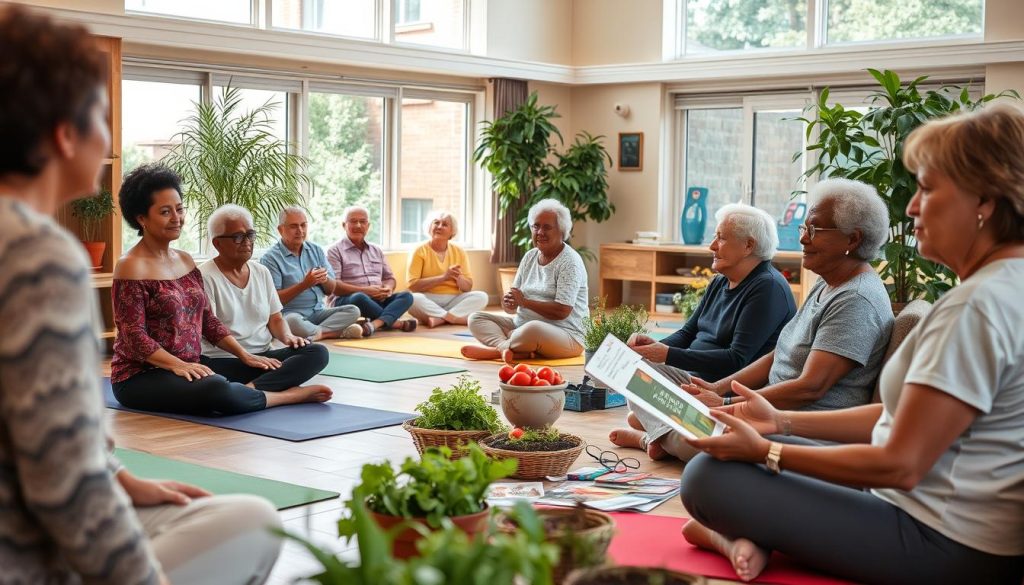
Transportation Services for Seniors
Getting around is key for seniors to keep healthy and well. A lot of them use public transport to go to doctor visits. In big cities, 20% of seniors rely on it15. There’s also paratransit for those who can’t use regular buses. It works near regular bus routes at the same times16.
Some local groups have cool ride options like microtransit. These are shared rides that you can call for16. Rideshare programs also make life better for many seniors. After using free rides for three months, most felt happier and saw friends more15.
Many seniors get rides from family or friends. Over 40% get help this way15. Soon, more seniors will try out self-driving cars for rides. About 75% believe they will use this new tech15.
Medicare Advantage (Part C) might help pay for rides. It can give a Flex Card with money for these costs. This helps seniors get to places they need to go15.
Senior Mental Health Support
Mental health is very important but often ignored in older adults. It’s key for their happiness and health. Older people can face mental issues like depression and anxiety. These issues can make life hard for them. About 14% of people over 60 have a mental disorder. This shows how crucial support for their mental health is1718.
Understanding Mental Health Challenges
Older adults can easily feel alone or without a purpose. This can make them very sad or anxious. Being isolated affects about 25% of older individuals. This can lead to serious mental health problems18. Mental disorders are a big reason why they might not enjoy life as much. We need to help them and offer the right support18.
Therapeutic Resources and Support Groups
It’s vital for seniors to find good help for their mental health. Being social and trying therapy or yoga can help a lot. The National Institute on Mental Health says testing new treatments is important. This helps make sure treatments work well for everyone19. Also, there are hotlines and programs made just for older people. These can be great for their mental wellness17.
Aging Well Resources
Seniors want to keep living on their own. There are many tools and help available for this. Things like help for moving around the house, and getting involved in community services. With the right help, seniors can live by themselves safely and healthily.
Resources for Maintaining Independence
Many programs and technologies help seniors stay independent. Eating well, staying active, and dealing with stress can help avoid sickness20. Learning new things is also good. It keeps the mind sharp and healthy20. Taking part in learning and community stuff makes life meaningful. It’s good for the body and soul20.
Technology Aids for Seniors
Technology is important for seniors’ health and happiness. Health apps are good for keeping fit and managing pills. Tools for talking with friends help seniors feel less alone. This makes them happier and healthier20. Resources like the Fairfax 50+ Facebook page offer lots of info and ways to meet people21. Many services can be reached by phone or email. They give help that fits what older adults need22.
| Resource | Description | Contact Information |
|---|---|---|
| Department of Family Services | Provides support and resources for seniors. | 703-324-7948, TTY 711 |
| The Golden Gazette | A free monthly community newsletter covering topics for older adults. | N/A |
| Aging Care Connections | Offers workshops, fitness classes, and health materials for seniors. | 708-354-1323, AWN@agingcareconnections.org |
| Fairfax 50+ Podcasts | Covers various topics affecting the senior community. | N/A |
Senior Care Services
As people get older, they often need different kinds of help to stay healthy and happy. There are many choices to help meet their needs.
In-Home Care Options
In-home care helps seniors with what they need in their daily lives. It helps them with things like dressing, bathing, and making meals.
This kind of care also provides company which helps seniors feel less lonely. They might not be able to go out without help. Services like therapy and nursing can also be done at home.
Assisted Living Facilities
For those who need more help, assisted living is a great choice. These places help seniors make friends and stay active in a caring place. They also offer medical help23.
These facilities are for seniors who need more medical care. It’s important to think about money when choosing senior care. Family help and looking into options can help make a good choice24.
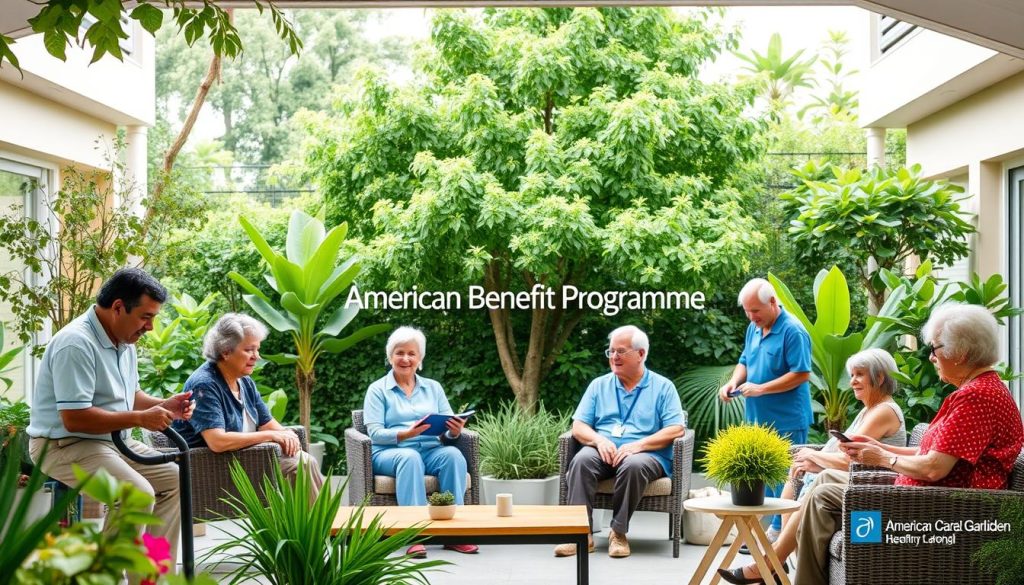
| Type of Service | Description | Typical Users |
|---|---|---|
| In-Home Care | Personal assistance with daily living activities | Seniors wishing to stay at home |
| Assisted Living | Supportive community with medical oversight | Seniors needing more comprehensive assistance |
| Adult Day Care | Day programs offering socialization and activities | Seniors needing daytime support |
Geriatric Health Tips
Staying healthy as we get older means being active in our care. This includes preventing illness and taking care of ongoing health problems. Following key geriatric health tips greatly improves our physical and mental health.
Preventive Care Essentials
It’s important for older adults to get regular check-ups and health screenings. These help manage disease risks like high blood pressure and cholesterol. Catching issues early helps with better treatment25. Being active for 150 minutes a week and doing strength exercises helps a lot25. Making friends and staying connected can prevent loneliness. This loneliness can lead to depression and memory problems25.
Managing Chronic Conditions
Many seniors have long-term health issues such as heart disease, arthritis, and diabetes. It’s key to make changes in how we live to deal with these. Eating well is critical for those 60 and up to boost health and happiness. Eating protein from beans, dairy, and seafood keeps muscles strong. It’s also important to eat foods high in potassium, calcium, vitamin D, and fiber for energy26. Sharing meals with others can make eating more fun and good for our minds26.
| Health Aspect | Recommendation |
|---|---|
| Physical Activity | 150 minutes of moderate exercise weekly |
| Nutrition | Balanced diet with adequate protein intake |
| Social Interaction | Encourage social meals to boost mental wellness |
| Health Screenings | Regular check-ups to catch early concerns |
Using these tips for staying healthy can make life better and longer for seniors.
health and wellness resources for seniors
Conclusion
It’s important for seniors to use health and wellness resources as they get older. About half of older people in the U.S. will live longer and deal with many health issues. This makes taking care of health in many ways very important. Studies show that most U.S. health money is spent on chronic illnesses. This shows why it’s key to manage health early and use important services27.
Wellness programs help seniors make friends and keep their bodies and minds healthy. This can make their lives better. For example, working out often can cut the risk of getting dementia in half. Meeting people is also great to avoid feeling lonely28. Many older people also have mental health problems. This shows how much they need a lot of support27.
Seniors should use local and national resources to stay independent and healthy. Data shows that few seniors do enough strength exercises. This means we need fitness programs made just for them29. By using these resources, seniors can have a happier and richer life.
Source Links
- Materials for Older Adults | odphp.health.gov
- Promoting Health & Wellness in Seniors – SRG Senior Living
- What Do We Know About Healthy Aging?
- Living Well: Nine Holistic Approaches to Senior Health
- Empowering Aging in Place: Holistic Strategies for Senior Well-Being — HealthIMPACT Live
- Resources for Aging Adults and Their Families – National Library Service for the Blind and Print Disabled (NLS) | Library of Congress
- 10 Self-Care Activities for Seniors for Health and Happiness
- General Resources and Strategies | ACL Administration for Community Living
- Nutrition Programs for Seniors | Nutrition.gov
- Exercise Programs That Promote Senior Fitness
- Best Wellness Programs for Seniors
- Health & Wellness – The Senior Alliance
- Services for Older Adults Living at Home
- Marjorie P. Lee — Lifestyle — Senior Wellness, resources for seniors
- How Can Older Adults Get Help with Using Transportation Services?
- What Caregivers Should Know About Transportation Services
- Promoting Mental Health Wellness in Seniors – Spring Mountain Treatment Center
- Mental health of older adults
- Older Adults and Mental Health
- Aging Well – HelpGuide.org
- Aging Well! Resource Guide | Family Services
- Enrichment
- Community-Based Supports and Services for Older Adults: A Primer for Clinicians
- Home Care Services and In-Home Assistance for Seniors
- Healthy Aging Tips for the Older Adults in Your Life
- USDA MyPlate Nutrition Information for Older Adults
- Senior Health and Wellness Tips
- The Importance of Wellness Programs in Senior Living
- Aging Adults’ Preferences for Wellness Program Activities and Delivery Characteristics: A Cross-Sectional Survey

